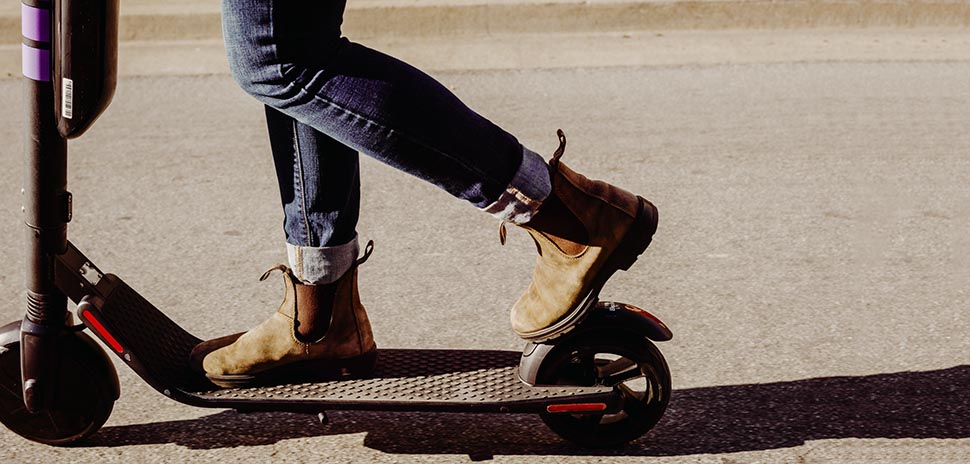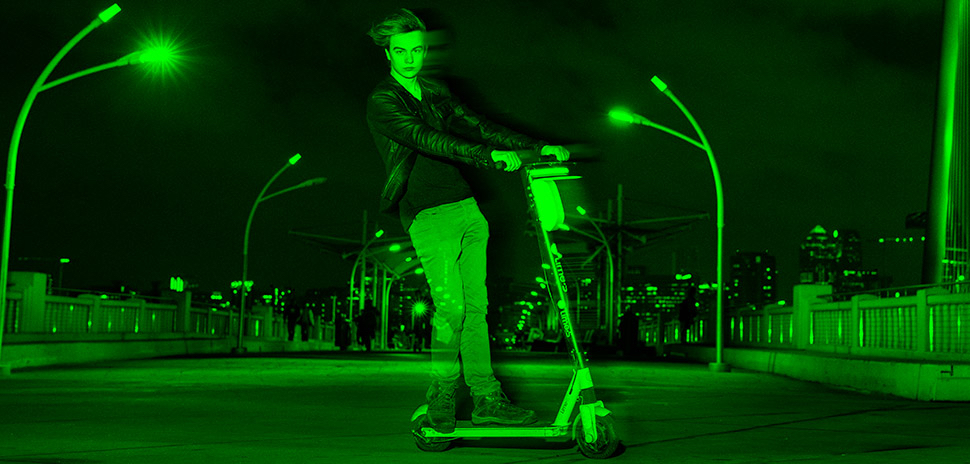A year after the arrival of shared-use electric scooters (e-scooters) in Dallas, it’s become clear Dallasites have fallen hard for the two-wheeled vehicles.
User data shows Dallasites love them on weekdays between 5 and 6 p.m., and just before work, helping them dodge traffic jams. That’s when weekday usage peaks, according to analyses from e-scooter company Lime and the city of Dallas. Riders literally have been falling head-over-heels for them in the deep of night as well, city of Dallas Transportation Director Michael Rogers said.
It’s at that time that love hurts when it comes to scooters.
“We have had numerous meetings with hospital networks,” Rogers said, adding that healthcare providers are providing him with stats on a variety of scooter-related bruises, strains, and sprains. “Most occur in (the) wee hours of the night.”
The reports also indicate many accidents are occurring on sidewalks as well, he said.
Cities are taking a hard look at scooters
That’s why Rogers said he will recommend that scooter providers curtail late-night operating hours, and a ban for the use of scooters on sidewalks. (Currently, they’re not allowed on sidewalks in Dallas’ Central Business District, which is bounded by Woodall Rogers Freeway to the north, I-30 to the south, I-35E to the west, and I-45 to the east), The Cedars, and Deep Ellum. Sidewalk riding is prohibited in some areas of Plano, such as Legacy and in the historic downtown.

[Photo: Courtesy Lyft]
Dallas isn’t the only city scrutinizing its scooters. San Antonio, for example, outlawed the use of scooters on sidewalks beginning July 1, citing reports of numerous injuries and complaints about reckless operation. Nashville, Tennessee, banned them on June 21 after a fatal crash. Houston has hesitated to accept them at all.
Rather than pulling the plug on electric scooters, the city of Dallas is attempting to harness the data to reduce the chances of injuries.
Rogers said he plans to approach Dallas City Council to revise its ordinance, which sunsets in November.
“You want [riders] to take them, to move people into another mode of transportation,” he said. “To help the environment, to help with congestion levels, and it’s doing it. It’s meeting performance measures in a very great way.”
The scooter as conduit for public transit/fun/head injuries
The introduction of scooters/bikes to Dallas has stirred activity in its urban core. It’s not uncommon to see small packs of scooter riders migrating from Deep Ellum to Downtown Dallas. Scooters cluster outside popular lunch and dinner spots on Akard Street. Dozens upon dozens of scooters were parked outside the 2019 DreamHack Dallas event at the Kay Bailey Hutchison Convention Center earlier this year.
Between August 2017—when Lime bikes were introduced in Dallas—and March 2019, scooter and bike riders have taken more than 1.4 million trips in the Dallas Region, according to the Lime analysis. More than 3,000 e-scooters—from Lime, Lyft, Jump, Bird, and others—were deployed in Dallas as of April 2019, according to the city of Dallas. Scooters have largely supplanted rental bikes in Dallas.
“In Dallas, the heaviest concentrations (of trips) are in and around Downtown, Victory, Uptown, Knox-Henderson, Lower Greenville, Trinity Groves, and Deep Ellum,” Lime general manager Nick Barber wrote to Dallas Innovates via email. “In Plano, Lime vehicles are most concentrated around Legacy and Downtown Plano.”
READ NEXT (Yarn) Bombs Away: Dallas Lime Scooters Go Red, White, and Blue
Weighing the costs and benefits of e-scooters on public thoroughfares
Michael Rogers, who also receives scooter usage data at the city of Dallas, said indications are that many of the riders are using the vehicles as means to quickly exit or enter their workplaces at the start or close of their working days. They do this by taking the scooters to or from DART stations, skipping the rush-hour traffic altogether. (DART says ridership has increased by roughly 4 percent at its Pearl and St. Paul stations, but has remained flat at its Akard and West End stations; spokesmen say the increases could possibly be attributed to new apartment developments nearby).
Barber writes that people are scooting for a variety of purposes: “We have seen this as a combination of a lot of different types of trips—to public transportation, to home, to dinner, to a game at the AAC (American Airlines Center), to a concert in Deep Ellum, etc. As you would expect, a lot of people in Dallas are ‘moving’ during evening commute hours, and many of them are using scooters as their form of transportation in that window.”
Now that user data and anecdotes have piled up, cities and transportation experts across the nation have been wrestling with the conundrum of the convenience electric scooters deliver versus their dangers. Advocates say e-scooters have become an effective solution for last-mile travel.
“There are costs of e-scooters: the reason they’re (potentially) profitable is that they freeload on public space as their storage, distribution and retail channels,” wrote Michael Andersen, senior researcher at the Portland-based think tank Sightline Institute. “They can legitimately be super dangerous to use, though reasonable people can disagree on whether this means they should be illegal. And … they’re an annoyance and a potential danger to people walking, if they’re used on sidewalks.”
After noting several scooter accidents, the city of Austin collaborated with the Centers for Disease Control and Prevention to determine the root causes of scooter wrecks. The resulting study found that most accidents involved relatively inexperienced riders, and recommended that the public should be better educated regarding scooter safety. A third indicated they were riding scooters on sidewalks.
An April 2019 study by Bird concluded that scooters have lower accident rates than bikes. It also indicated that scooter accidents are less common in bike-friendly cities, and that scooter fatality rates are dwarfed by accidents involving passenger cars, SUVs, etc.
Lime encourages its riders to travel in bike lanes, if possible, and on the street They also encourage riders to avoid drinking, to wear helmets, and to make eye contact with others when scooting.
Rogers told Dallas Innovates that he’s finalizing contracts with Southern Methodist University and two tech companies to develop a solution to help scooter companies and riders adhere to Dallas’ scooter/bike ordinance.
Keep on scootin’?
Urban affairs researcher Andersen acknowledges that the scooters are an important gateway away from traditional car travel.
“E-scooters … improve non-automotive travel options,” he wrote to Dallas Innovates. “This is good for two reasons: Anyone choosing a scooter over walking or biking is doing so because they think it’ll make that trip more convenient or pleasant; and some number of trips are actually converting directly from auto to scooter, which is to the good, in terms of efficiency of urban space, street safety, energy etc.”
So, is the increased mobility worth the hassle?
“I’m for them,” Andersen said. “Adults should be able to make decisions about their own safety, and they certainly endanger other people on the road way less than cars do. I do think user safety is a concern, though.”
![]()
Get on the list.
Dallas Innovates, every day.
Sign up to keep your eye on what’s new and next in Dallas-Fort Worth, every day.































